Cessna Citation Ascend
Since Citation Excel deliveries began in 1998, Textron Aviation (née Cessna Aircraft) has delivered more than 1,100 units, making it the firm’s most successful jet in its 96-year history. Based on the XLS series, the newest iteration of the model, the Ascend, offers a number of features designed to extend the winning streak, including the more fuel efficient Pratt & Whitney Canada PW545D turbofans, an upgrade from the Collins Pro Line 21 to Garmin G5000 avionics with standard auto-throttles, increased payload, and more range. Scheduled maintenance interval shave been stretched to 800 flight hours or 18 months, whichever comes first.
If you're not already a subscriber, what are you waiting for? Subscribe today to get the issue as soon as it is released in either Print or Digital formats.
Subscribe NowThe Ascend has new and larger flight deck and cabin windows, upgraded passenger seats, and improved acoustical insulation to soak up sound. The 8-inch dropped aisle has been filled in to create a flat floor. However, the dropped aisle remains an option for customers needing more center cabin headroom.
The Honeywell RE100 now is approved for unattended operation, freeing both flight crewmembers to focus on essential preflight chores. A host of other upgrades endows the Ascend with levels of comfort, quiet, convenience, and connectivity on par with Textron Aviation’s larger super-midsize aircraft. First deliveries are set to begin in 2025.
—With reporting by Fred George
| Price | $16.725 million |
| Engines | Pratt & Whitney PW545D (2) |
| Projected Max Speed | 441 ktas |
| Range | 2,100 nm |
| First Delivery | 2025 |
Dassault Falcon 10X

The growth of the Dassault Aviation infrastructure at the Bordeaux-Mérignac Airport (LFBD) in western France can be attributed to the success of the Rafale fighter series, and the Falcon 7X and 8X, as well as the recent introduction of the 6X—and its upcoming big brother, the 10X. Dassault began parts assembly in 2022 to pre-pare for the final assembly of the first test articles underway this year. The all-composite wing is being built at a dedicated facility in Biarritz.
The 10X, announced in 2021, has had a long slow buildup, fitting for a jet that will be the largest built by Dassault and introduce the largest cabin of any jet purpose-built for the business aviation sector. That cabin features a new design path for the company, breaking out of the traditional mold with bold colorways and seating that looks more like that of a penthouse living room than an aluminum tube. It has already received several nods in international design competitions, including the Red Dot award from the Design Society of the U.K.
With a range of 7,500 nm at Mach 0.85—and a top speed of Mach 0.925—the 10X is powered by a pair of bespoke Rolls-Royce Pearl 10X powerplants rated at 18,000 pounds of thrust apiece and able to run on 100 percent sustainable aviation fuel (SAF). On the flight deck, the 10X gives pilots the FalconEye combined vision system, as well as carrying over the digital flight control system (DFCS) made popular on the 7X. As the Dassault pilots finish up flight tests on the 6X and move to the first 10X test platform later this year, perhaps, we’re certainly eyeing them with envy.
| Price | $75 million |
| Engines | Rolls-Royce Pearl 10X (2) |
| Projected Max MMO | 0.925 |
| Range | 7,500 nm |
| First Delivery | Late 2025 |
Dassault Falcon 6X
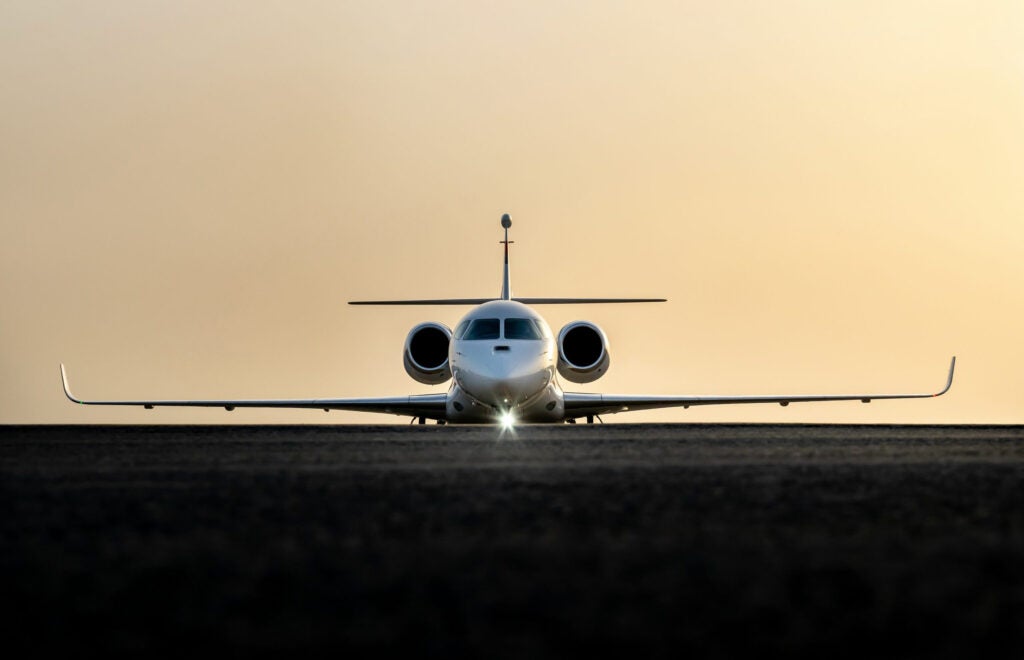
Long before pilots will get their hands on the DFCS sticks of the 10X, however, Dassault’s Falcon 6X will entice them to the flight deck. Now type certified under the European Union Aviation Safety Agency (EASA) and the FAA, the 6X leads the next generation of Falcons with its dual Pratt& Whitney PW812D engines. Rated at up to 14,000 pounds thrust, the powerplants propel the wide-body, long-range 6X to a range of up to 5,500 nm at Mach 0.80 and a max cruise speed of Mach 0.925.
The 6X preserves the relative short-field performance of its predecessors, with the capability to operate out of 3,000-foot runways with a partial fuel load.
The balanced field length for takeoff is 5,480 feet under ISA conditions at sea level and at the maximum takeoff weight of 77,460 pounds.
- READ MORE: We Fly: Dassault Falcon 6X
The 6X showed off its graceful, powerful ability to maneuver at the Paris Air Show in late June at the hands of pilots Philippe Duchateau and Fabrice Valette. Visitors to the display could sit on the flight deck and witness the four large-format displays, two tablets mounted on either pilot side, and roundly shaped pedestals from which to stabilize while entering data into the flight management system. It’s a well-thought-out cockpit design, with pilot-friendly touches in and around the instrument panel, such as EFB mounts. We watched passersby stroll in front of the nose through the head-up display with the FalconEye cutting through the gray and bringing everything ahead of the airplane into sharp focus.
| Price | $47 million |
| Engines | Pratt & Whitney PW812D (2) |
| Projected Max MMO | 0.925 |
| Range | 5,500 nm |
| First Delivery | 2023 |
Gulfstream G700
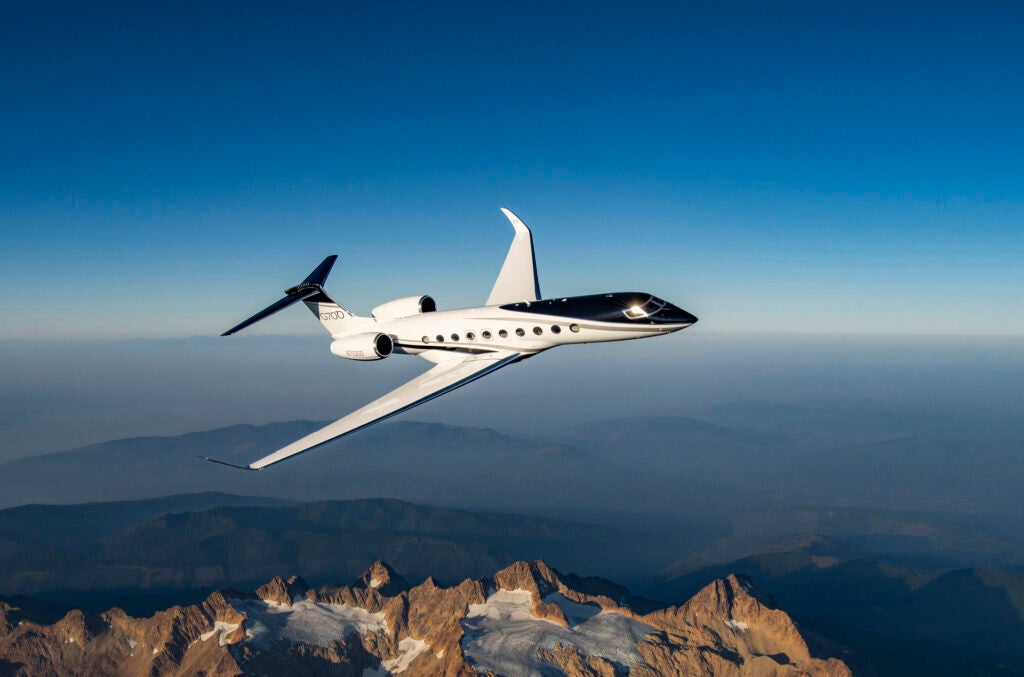
The race to certify the next long-range mount looked neck-in-neck between the Falcon 6X and the Gulfstream G700. With its paperwork filed and everything over but the shouting, the bird from Savannah, Georgia, first announced in 2019 is expected to begin deliveries in the first quarter of 2024.
The G700, which takes its strength from the Rolls-Royce Pearl 700 powerplants, can carry up to 19 passengers—and sleep up to 13—in as many as five flexible living spaces. The 7,500 nm range (at Mach 0.85) puts it squarely in the ultralong category, routinely cruising at 45,000 to 49,000 feet. In the conclusion of the flight test program, the G700 continued to set city-pair speed records. It flew into the European Business Aviation Conference and Expo (EBACE) and Paris on up to 30 percent SAF and marked a memorable flight from Savannah to Tokyo on SAF at an average speed of Mach 0.89.
And what’s in it for the pilot? A familiar Symmetry Flight Deck up front, paired with Gulfstream’s Enhanced Flight System, that you’d find on theG500 and G600, making the G700 a straightforward transition for aviators stepping up.
| Price | $78 million |
| Engines | Rolls-Royce Pearl 700 (2) |
| Projected Max MMO | 0.925 |
| Range | 7,500 nm |
| First Delivery | 2024 |
Gulfstream G800

The higher model number ascribed to the Gulfstream G800—sister ship to the G700—refers to the increase in range customers can expect when the platform debuts in a couple of years. Yes, topping the charts at 8,000 nm, the G800 achieves this on the same wing as the G700 by shortening the length of the fuselage and reducing the number of living areas to four.
The G800, currently in the heart of its flight test program, achieves the target distance powered by the same Rolls-Royce Pearl 700 powerplants, at 18,250 pounds of thrust each, at Mach 0.85. If you want to go faster—and sacrifice 1,000 nm of range—push it up to Mach 0.90. Or just get there fast by taking a shorter segment at Mach 0.925.
Gulfstream’s flight test crew flew the first test article with a finished interior—used for proving those components in worldwide environments and operating conditions—to the Paris Air Show.
A second test aircraft first flew on July 15 on a blend of 30 percent SAF and reached a top speed of Mach 0.935 during the mission.
Sitting up front, the familiar Symmetry Flight Deck offers pilots a total of 10 display screens up front—four large-format ones across the front left to right, and six smaller touchscreen displays that can be configured in nearly endless ways depending on the phase of flight, pilot preference, or during abnormal and emergency operations.
The predictive landing performance system works in the background to help prevent runway overruns—though the G800 is projected to mark a6,000 takeoff distance at its max gross weight of 105,600 pounds.
| Price | $72.5 million |
| Engines | Rolls-Royce Pearl 700 (2) |
| Projected Max MMO | 0.925 |
| Range | 8,000 nm |
| First Delivery | 2024 |
Gulfstream G400

Close kin to the G500 and G600, Gulfstream’s next answer to the large-cabin midsize question, the G400, takes its lineage from its bigger siblings. The OEM stretched the fuselage to 36 feet, 4 inches and leveraged Symmetry Flight Deck technology from the larger models to create an advanced jet boasting a best-in-class cabin cross section with up to 2.5 living areas, with 100 percent fresh air that is refreshed every two minutes.
Those fortunate passengers (up to 12, sleeping as many as five) will enjoy the G400’s projected 4,200 nm range at Mach 0.85 settings—that’s Geneva to Minneapolis—and a top speed of Mach 0.90 and a maximum cruise altitude of 51,000 feet. And that’s done more efficiently than on previous Gulfstream models. The combination of the advanced Pratt &Whitney PW812GA powerplants, wing with improved aerodynamics, and avionics management should realize up to 30 percent in greater fuel efficiency as compared to a G450 on a hypothetical 3,000 nm journey with eight passengers at Mach 0.85.
The G400 is in development alongside the G800, with its first test aircraft delivered internally and poised for a first flight later this year. Gulfstream predicts the airplane’s entry into service will be in 2025.
| Price | $34.5 million |
| Engines | Pratt & Whitney PW812GA (2) |
| Projected Max MMO | 0.90 |
| Range | 4,200 nm |
| First Delivery | Late 2025 |
Bombardier Global 8000
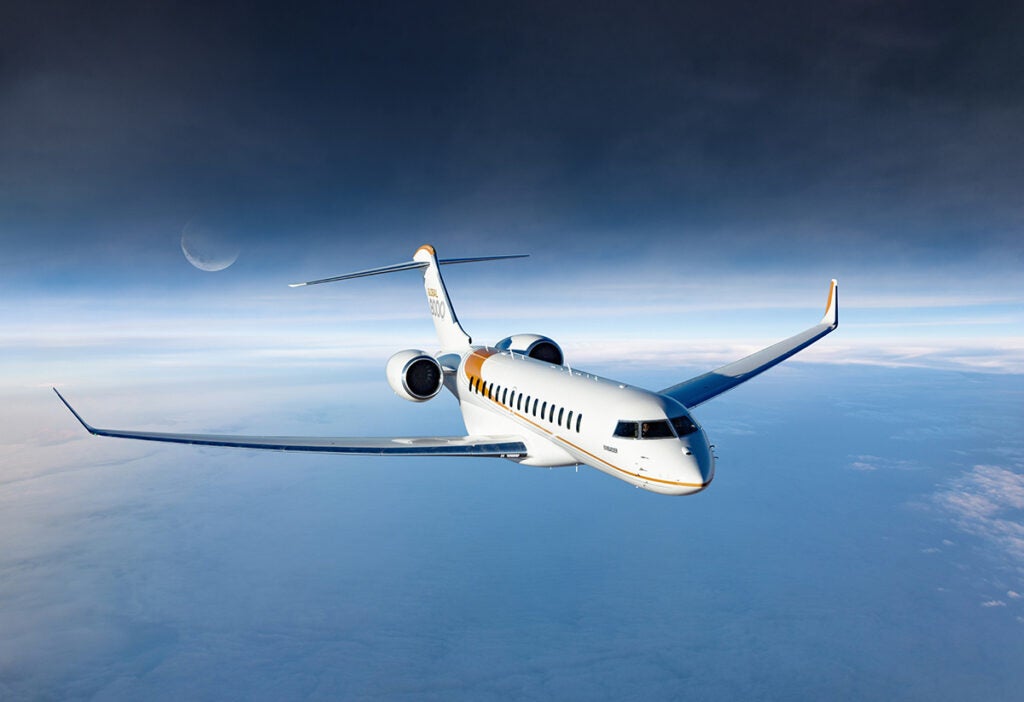
The gauntlet thrown down in the ultralong-range market appears to be a spitting match between the Gulfstream G800 and Bombardier’s latest entrant in the Global series, the 8000. Yes, that 8000 translates directly into the expected range of the new luxury plat-form—but the Montreal-based OEM wants to not just equal but win on speed. Try Mach 0.94, according to the manufacturer’s latest claims.
And it wants to achieve that speed without sacrificing passenger comfort. Bombardier has developed what it calls the Smooth Flex Wing to blend control and agility with the ability to ride the bumps well. Like its competitors from Savannah, the 8000’s max altitude is 51,000 feet, and it will maintain a cabin altitude of 2,900 feet at FL410. Up front, the Bombardier Vision flight deck on the Global 7500 will assist pilots in managing both short and long segments. Four large-format displays sit between two EFB mounts, supplemented by the head-up display available for both the left and right seat. A fully loaded Global 8000—at 114,850 pounds—is anticipated to need just 5,760 feet for takeoff, with a landing distance of 2,237 feet.
| Price | $78 million |
| Engines | General Electric Passport (2) |
| Projected Max MMO | 0.94 |
| Range | 8,000 nm |
| First Delivery | 2025 |
HondaJet 2600/Echelon
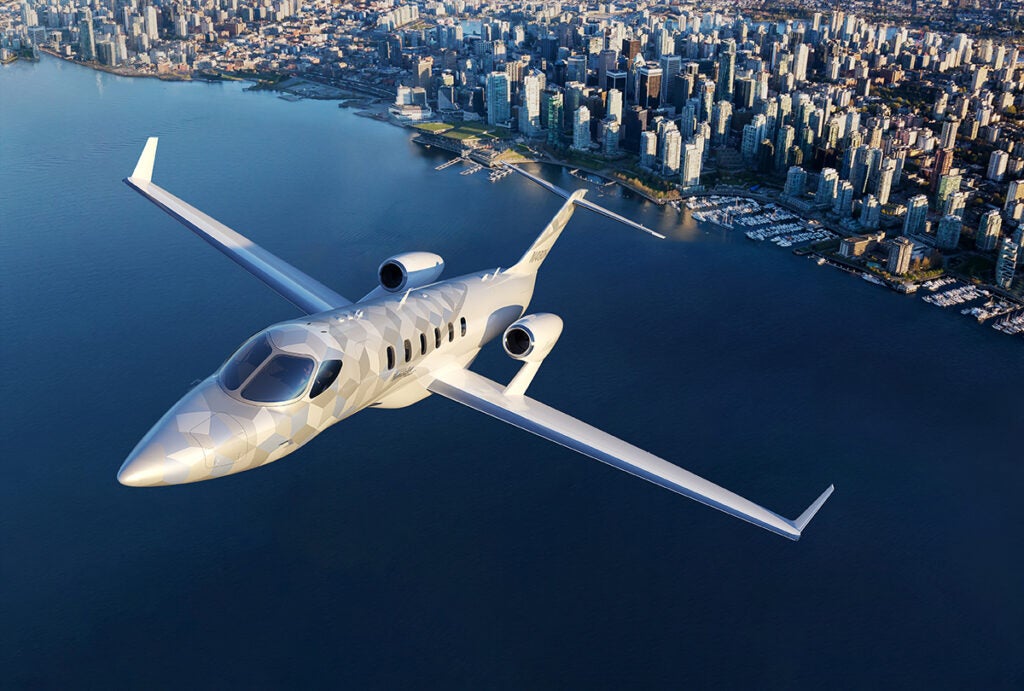
In a follow-up to the introduction of the HondaJet 2600 concept—recently rebranded as the HondaJet Echelon— at the National Business Aviation Association’s (NBAA) convention & exhibition in October 2021, Honda Aircraft has made its next move in bringing the new model into its lineup. In June, the OEM revealed that development continues on the project, with its official “commercialization” or plan to pursue type certification on the clean-sheet light jet.
Intended to be a midsize jet in alight jet’s body, the HondaJet Echelon is aimed at a 2,625 nm range (four passengers and one pilot, NBA AIFR) and 450 ktas maximum cruise speed—but at 20 percent better fuel efficiency than other light jets and a 40 percent improvement over midsize models.
FAA type certification should come in 2028, with entry into service as a single-pilot-operated platform. Up to 11 people can be seated on board, with the option for nine or 10 passengers depending on crew requirements. Supply partners include Garmin for the G3000 flightdeck, Williams International and itsFJ44-4C engines, Spirit AeroSystems providing the fuselage, and Aernnova for aerostructures. Fabrication of the first airframe is underway as HondaAircraft completes initial engineering on the program.
| Price | TBD |
| Engines | Williams International FJ44-4C (2) |
| Max Speed | 450 ktas |
| Range | 2,625 nm |
| Expected Type Certification | 2028 |
Beechcraft Denali
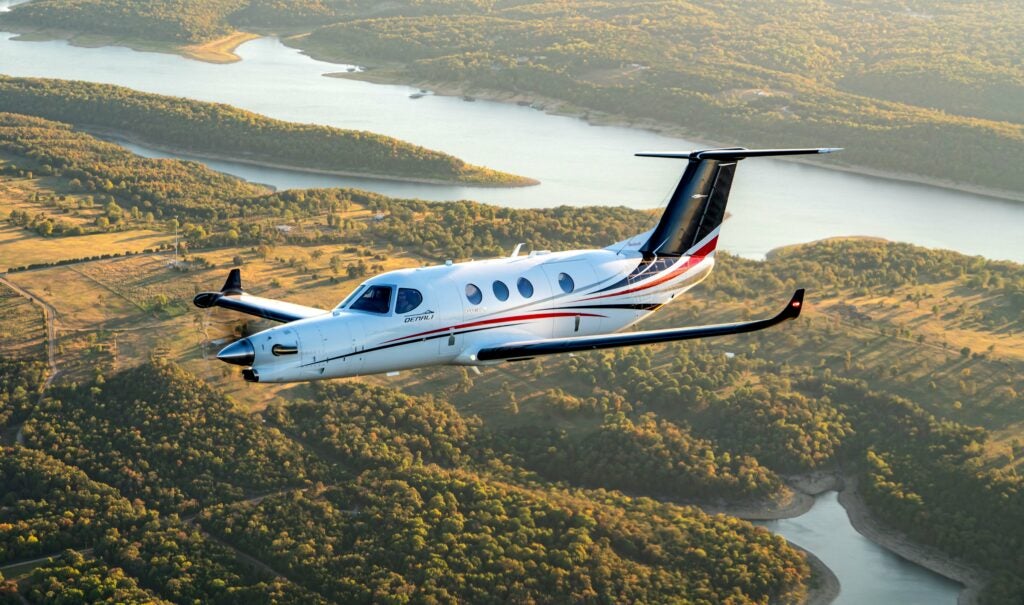
Textron Aviation marked an important rite of passage in any airplane’s development program—its first appearance at EAA AirVenture in late July. The Wichita, Kansas-based OEM flew its third test article to the show in Oshkosh, Wisconsin—called “P2” in company parlance to designate the conforming airplane with a full interior for that phase of the flight test campaign.
There’s a lot you can understand much more immediately than you can with a mock-up. First, the air-plane feels like it stands roughly the same height as its Beechcraft brethren, the King Air 200 series. Once onboard, the ergonomics of the Garmin G3000 integrated flight deck harken to the Cessna CJ series but with the familiarity of the Brand G avionics. The powerplant installation includes FADEC and an auto-throttle—necessary for Garmin Autoland certification.
On the business end, the clean-sheet GE Catalyst engine is proving worthy of the investment in it, according to test pilots. As of May, the program included 26 engines built, with more than 5,400 hours of testing—figures that increase every day. The McCauley prop on the front is helping the combination to achieve even greater fuel efficiency than originally projected. The Denali will be certified with flight into known icing (FIKI) capability, completing what Textron Aviation calls “a jet-like experience.” Still, certification isn’t expected until 2025, recognizing the significant work remaining to bring anew turboprop engine to market.
| Price | $6.95 million |
| Engine | General Electric Catalyst |
| Projected Max Speed | 285 ktas |
| Range | 1,600 nm |
| First Delivery | 2025 |
Extra 330SX
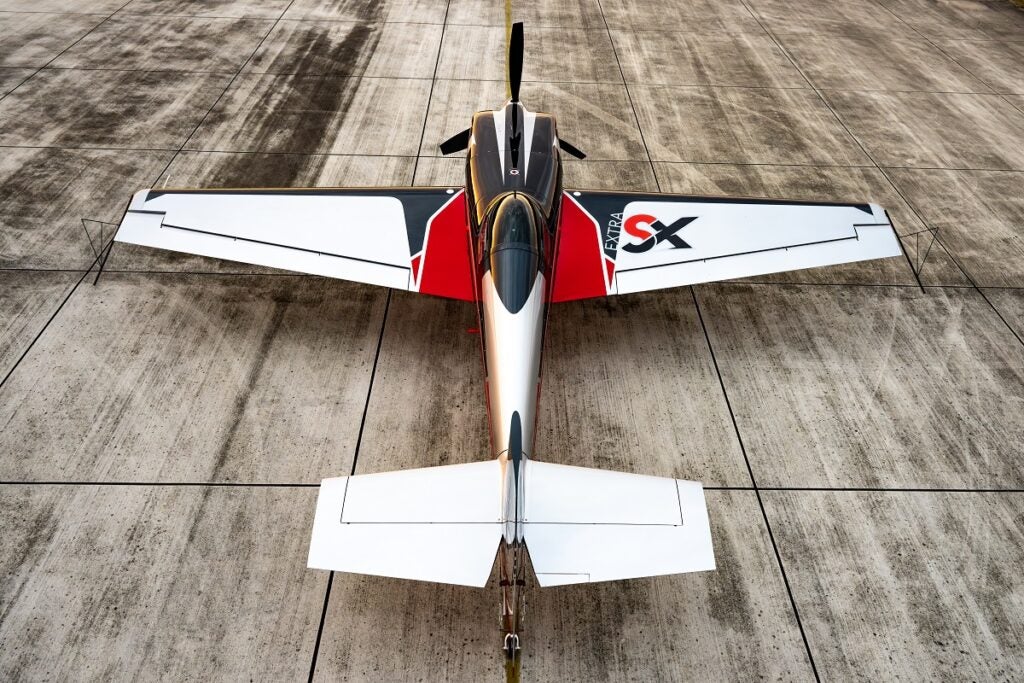
The first production Extra 330SX may not be taking to the skies until next year, but the new single-canopy, aerobatic airplane is already spoken for. At a presentation at EAA AirVenture, company president Marcus Extra introduced Bob Freeman as the first customer.
The Extra 330SX improves upon the 330SC with better cooling up front on the 315 hp Lycoming and a Garmin G3X Touch flight display. The sporty airplane features high-performance ailerons, with 60 percent larger horns and modified wing tips, along with a reduced fuselage length. The combination leads to its stunning roll rate, which the company measures by mounting a Go-Pro in the airplane, taking it out for a series of rolls, then returning that video to the engineering team to calculate the rate.
Other improvements in the cockpit are proposed to deliver greater pilot comfort, including a taller stick with reduced side-to-side travel to better accommodate larger pilots—like Extra, who flew the airplane earlier this summer in a com-petition in Germany for the first time. The first deliveries will take place in2024, with the company ramping up its production space in DeLand, Florida, to meet the challenge.
| Price | TBD |
| Engine | Lycoming AEIO-580 (1) |
| Top Speed (VNE) | 220 kias |
| Max Gs | +/-10 Gs |
| First Delivery | Mid-2024 |
Van’s RV-15
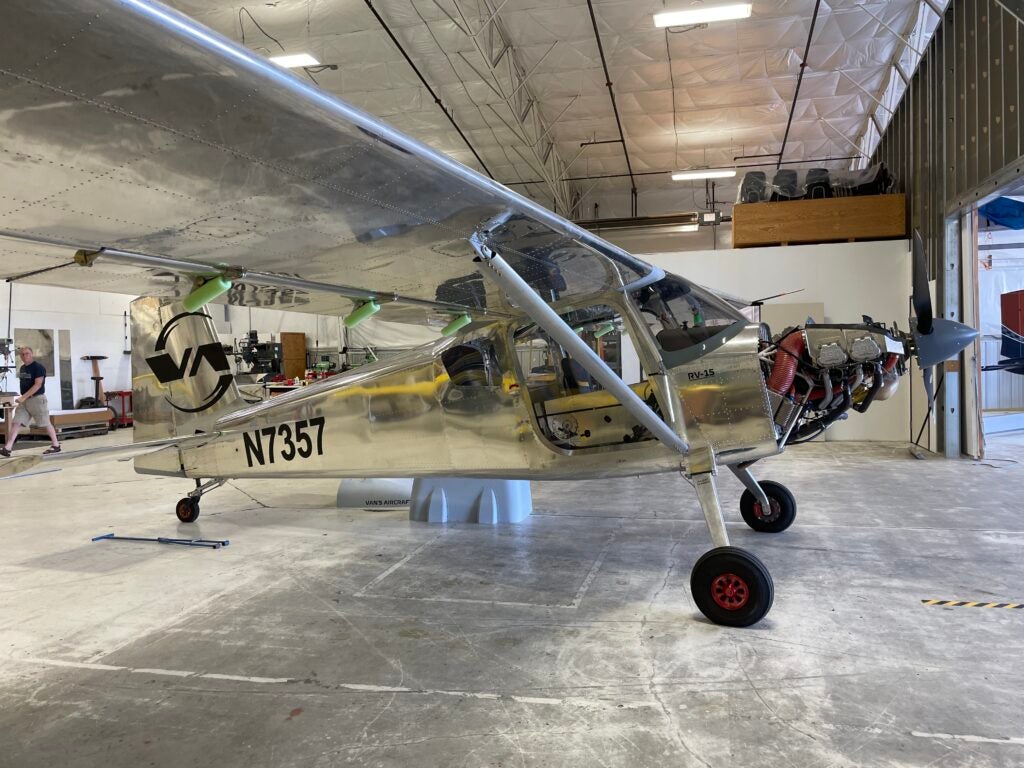
Van’s Aircraft debuted its first high-wing model at AirVenture 2022. Once more it flew the prototype to Oshkosh for the air show this summer with a few updates made to the still mostly mysterious kit in progress. Most take a bit of sleuthing to determine, but they include changes to the stabilator and anti-servo tab to improve stability and stick forces.
The ailerons have also been reshaped slightly, with hinge points moved, and changes made to the internal control system gearing influence stick throw. Van’s test pilots already report improved stick forces and control harmony.
The prototype stills runs from a fuel tank located in the cabin. Van’s plans to build new wings that will mount the fuel tanks, reported at 60 gallons total, internally, following legacy high-wing designs with this increase in pilot/passenger protection in the event of an accident.
With the wing moving back about 4 inches, Van’s will see benefits to load carrying and CG—and allow for the use of lighter powerplants than the current Lycoming IO-390, though it’s expected to be the core engine.
The airframe features unique, damped landing gear intended to smooth out vagaries in both pilot and runway surface. Van’s is sticking to its previously announced plan* to begin taking deposits 12 to 18 months after the airplane’s debut. It is likely to need at least six more months to get the design pinned down and prepare to build kits.
—With reporting by Marc Cook
*Since this article went to press, Van’s Aircraft has filed for Chapter 11 bankruptcy protection and the timeline for the RV-15 is unknown.
| Kit Price | TBD |
| Engine | Lycoming IO-390 (on prototype) |
| Max Cruise Speed | TBD |
| First Kit Delivery | TBD |
Tecnam P-Mentor
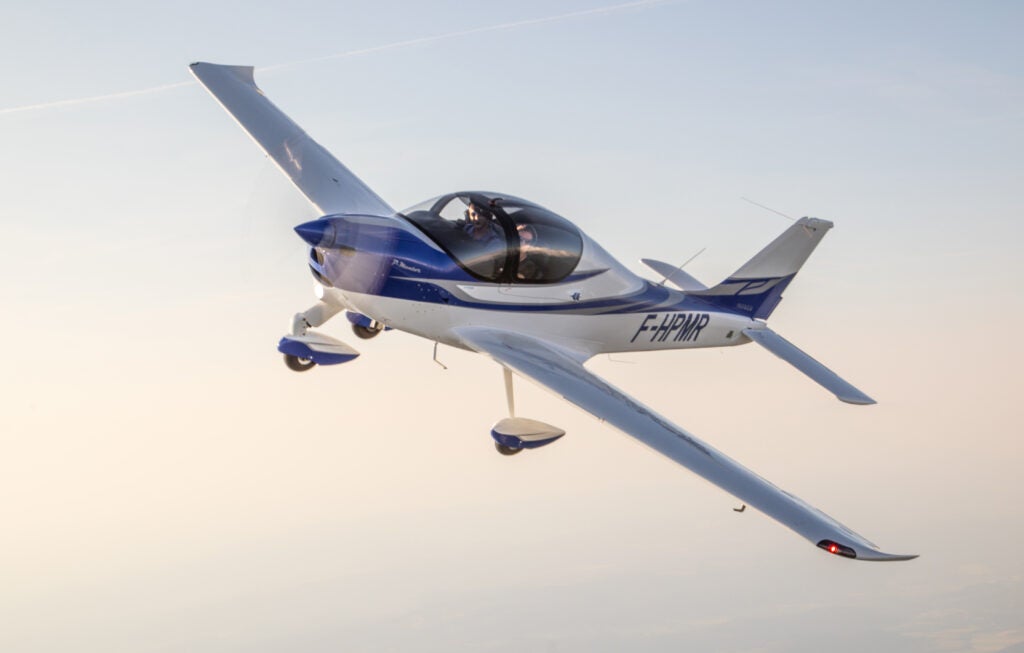
Tecnam Aircraft debuted its P-Mentor at EAA AirVenture 2023, though the airplane is already approved under EASA CS 23, the equivalent to FAA Part 23 certification. The P-Mentor, featured and test flown in FLYING’s Issue 939, should see the agency’s nod in early2024, according to the company.
- READ MORE: We Fly: Tecnam P-Mentor
The P-Mentor is a two-seat aircraft designed to be a primary training platform, equipped with Garmin G3XTouch and GTN 650Xi avionics and boasting almost un-heard-of fuel economy at 3.7 gallons per hour.
This low consumption translates to low operating costs for owners and renters—and means lower carbon dioxide emissions. The P-Mentor’s fuel consumption results in up to nine operating hours between refuelings.
Powered by a FADEC-equipped Rotax 912iSC3 powerplant, the heavier-than-an-LSA P-Mentor shows graceful handling characteristics and docile slow flight and stall behavior. Takeoff ground roll at less than max gross was around 1,000 feet, with a landing roll less than that on a grass strip at the company’s headquarters in Capua, Italy. The comfortable cockpit can also accept a Garmin GFC 500 autopilot for serious cross-country and IFR operations. Several flight schools in the U.S. signed orders for the trainer at AirVenture.
—With reporting by Amy Wilder
| Price | $350,750 |
| Engine | Rotax 912iSC3 (1) |
| Max Cruise Speed | 117 ktas |
| Range | 950 nm |
| First U.S. Delivery | 2024 |
Elixir Aircraft
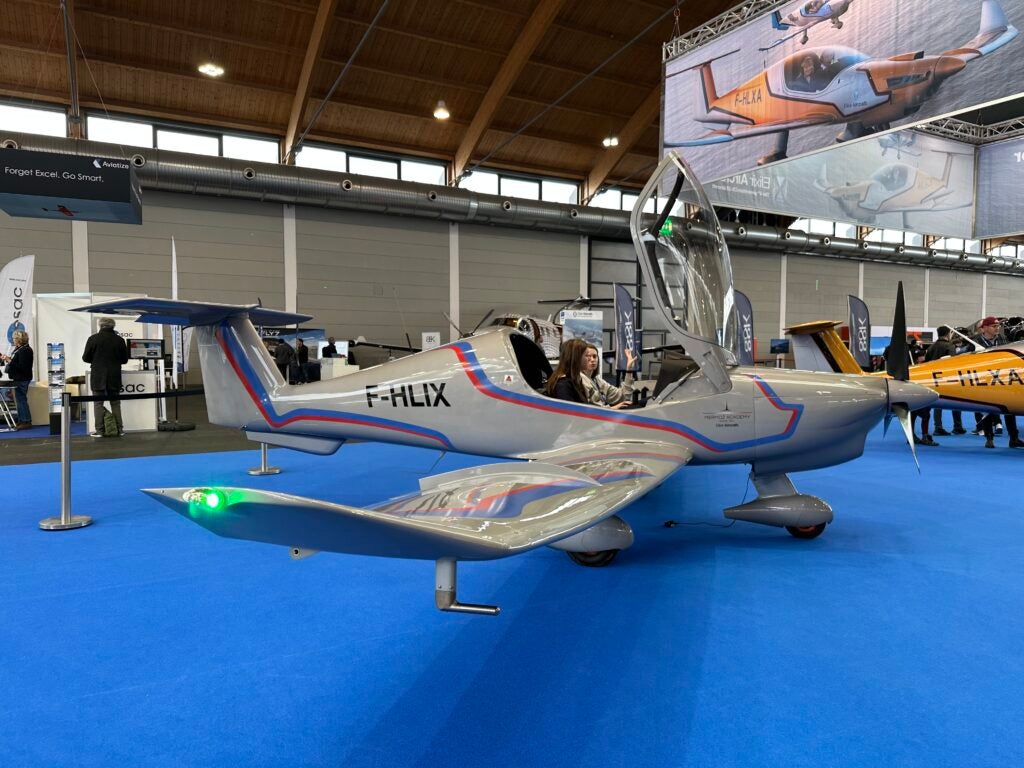
Elixir Aircraft, based in La Rochelle, France, has also posted a sales streak for the training version of its aircraft, with a deal closed in June on more than 100 units—50 on option—with Sierra Charlie Aviation in Scottsdale, Arizona. The agreement caps a growing order book for the OEM as it brings three versions of its single-engine airplane to market.
Most of the models—intended for flight training—feature the 100 hp Rotax 912iS powerplant with a full glass cockpit. Sierra Charlie Aviation plans to integrate the airplanes into its Aviation Career Program, an ab initio course focused on identifying varying learning styles and steering those pilot applicants toward success. The composite airframe is built through the One-Shot manufacturing process to reduce parts count.
Elixir delivered five of its 912iS versions in 2022 for a total of more than 10 made so far by press time. The company was founded in 2015 by a trio of engineers who sought to reduce costs in flight training by lowering parts count and increasing efficiency in training aircraft. The first model achieved initial EASA CS 23 type certification in 2020, with FAA validation pending.
| Price | Around $300,000 |
| Engine | Rotax 912iS (1) |
| Max Cruise Speed | 130 kts (EASA) |
| Range | 1,000 nm |
| First U.S. Delivery | 2024 |
This article first appeared in the September 2023/Issue 941 of FLYING’s print edition.





